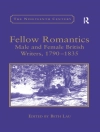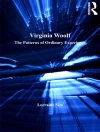This book is the first major ecocritical study of the relationship between British Romanticism and climate change. It analyses a wide range of texts – by authors including Lord Byron, William Cobbett, Sir Stamford Raffles, Mary Shelley, and Percy Shelley – in relation to the global crisis produced by the eruption of Mount Tambora in 1815. By connecting these texts to current debates in the environmental humanities, it reveals the value of a historicized approach to the Anthropocene. British Romanticism, Climate Change, and the Anthropocene examines how Romantic texts affirm the human capacity to shape and make sense of a world with which we are profoundly entangled and at the same time represent our humiliation by powerful elemental forces that we do not fully comprehend. It will appeal not only to scholars of British Romanticism, but to anyone interested in the relationship between culture and climate change.
Tabella dei contenuti
Introduction: Historicising Climate Change.- Chapter 1: Sir Stamford Raffles, Napoleon, and the Tambora Eruption.- Chapter 2: Print Politics and Climate in 1816.- Chapter 3: Byron, the Shelleys, and the ‘Year Without A Summer’.- Afterword.- Bibliography.
Circa l’autore
David Higgins is Associate Professor in English Literature at the University of Leeds, UK. He has published widely on Romantic literature and culture, including the monographs Romantic Genius and the Literary Magazine and Romantic Englishness, and the co-edited collection Jean-Jacques Rousseau and British Romanticism.












